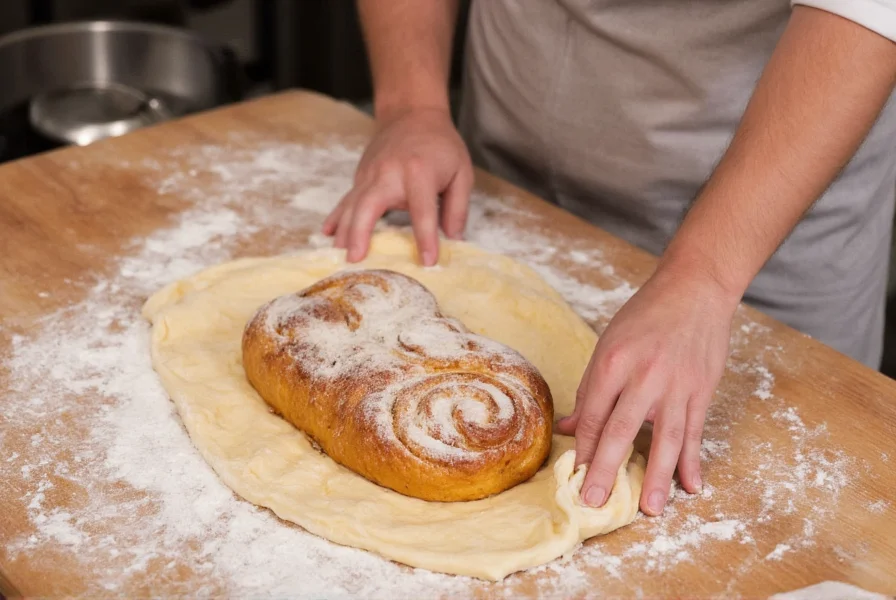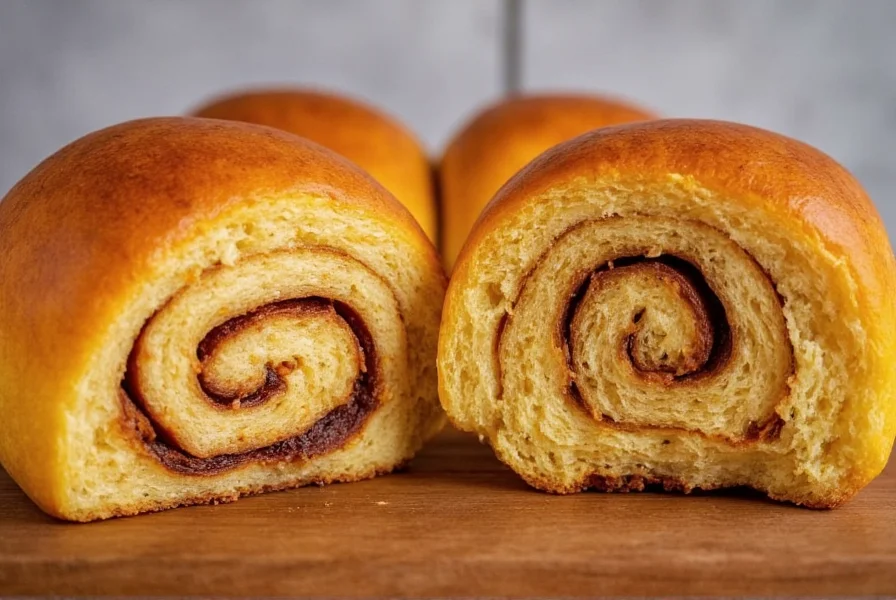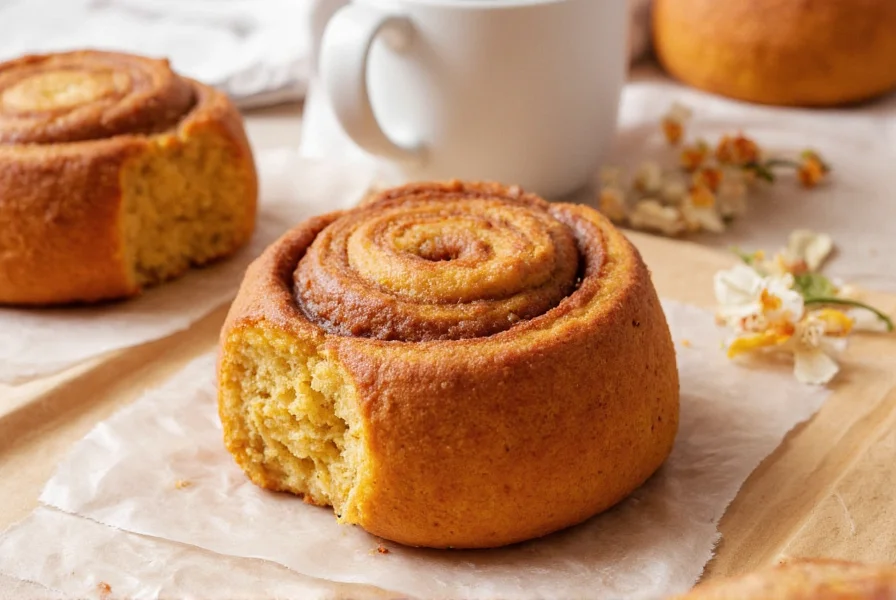Creating exceptional pumpkin sourdough cinnamon rolls requires understanding the delicate balance between sourdough fermentation and pumpkin's moisture content. Unlike standard cinnamon roll recipes that rely solely on commercial yeast, sourdough versions develop richer flavor complexity through natural fermentation while maintaining that signature soft, pull-apart texture bakers追求. The key lies in adjusting hydration levels to accommodate pumpkin puree's liquid content while preserving sourdough's distinctive tang.
The Science Behind Perfect Pumpkin Sourdough Cinnamon Rolls
Sourdough's natural acids interact with pumpkin's beta-carotene compounds, creating a more stable crumb structure that resists staling. When developing your homemade pumpkin sourdough cinnamon rolls recipe, remember that pumpkin puree typically contains 85-90% moisture, requiring precise flour adjustments. Professional bakers recommend reducing liquid content by 15% when incorporating pumpkin to maintain optimal dough hydration between 65-70%.

Essential Ingredients Breakdown
| Ingredient | Function | Professional Tip |
|---|---|---|
| Active sourdough starter | Provides natural leavening and complex flavor | Use at peak ripeness (4-6 hours after feeding) |
| Canned pumpkin puree | Adds moisture and autumnal flavor | Avoid pumpkin pie filling (contains sugars/spices) |
| Bread flour | Higher protein creates better structure | Substitute 20% whole wheat for nuttier flavor |
| Butter (cold) | Creates flaky layers | Grate frozen butter for even distribution |
Step-by-Step Baking Process
For the best pumpkin sourdough cinnamon rolls technique, follow this refined method. First, mix 100g active starter with 250g warm milk, 100g pumpkin puree, and 50g melted butter. Gradually incorporate 500g bread flour, 80g sugar, and 10g salt until a shaggy dough forms. Perform stretch-and-folds every 30 minutes for 2 hours at room temperature, then refrigerate overnight for optimal flavor development.
When preparing your sourdough discard pumpkin cinnamon rolls, roll the chilled dough into a 16x20 inch rectangle. Spread evenly with brown sugar, cinnamon, and a touch of espresso powder (enhances flavor depth). Roll tightly, slice with dental floss, and place in a buttered pan. Allow 4-6 hours for final proof at 75°F until doubled in size.

Troubleshooting Common Issues
Many home bakers struggle with soft pumpkin sourdough cinnamon buns becoming too dense. This typically occurs when pumpkin moisture isn't properly balanced with flour. If your dough feels sticky, resist adding excess flour - instead, perform additional coil folds to strengthen gluten. For optimal rise, maintain consistent temperature between 70-75°F during proofing. The dough should spring back slowly when gently pressed.
For perfect texture pumpkin sourdough cinnamon rolls, bake at 350°F for 22-25 minutes until internal temperature reaches 190°F. Overbaking causes dryness, while underbaking leads to gummy texture. Allow 15 minutes cooling before applying maple-cream cheese frosting, which complements the earthy pumpkin notes without overwhelming the sourdough tang.
Storage and Serving Recommendations
These rolls maintain freshness longer than traditional versions due to sourdough's natural preservative qualities. Store in an airtight container at room temperature for up to 3 days. For extended storage, freeze unbaked rolls after shaping, then bake from frozen with 10 extra minutes. Reheat individual portions at 300°F for 8 minutes to restore that easy pumpkin sourdough cinnamon roll perfection.
Frequently Asked Questions
Can I use sourdough discard instead of active starter for pumpkin cinnamon rolls?
Yes, you can substitute unfed sourdough discard in a 1:1 ratio by weight. However, expect a longer fermentation time (8-12 hours) and slightly less tangy flavor. For optimal results with discard, increase the proofing temperature to 78°F and add 15g extra sugar to feed residual yeast.
Why do my pumpkin sourdough rolls collapse after baking?
Collapse typically occurs from over-proofing or excessive moisture. Pumpkin adds significant hydration, so reduce liquid content by 10-15% when substituting. Ensure your dough passes the 'poke test' - it should spring back slowly, not immediately. Also verify your oven temperature with a separate thermometer, as inaccurate heat causes structural failure.
How can I enhance the sourdough flavor in pumpkin cinnamon rolls?
For stronger sourdough notes, extend the bulk fermentation to 12 hours at 65°F. Use a higher percentage of whole grain flour (up to 30%), which feeds wild yeast more effectively. Add 5g citric acid to the dough to lower pH, enhancing tang without compromising rise. Avoid adding too much sugar, which inhibits sourdough bacteria.
What's the ideal hydration level for pumpkin sourdough cinnamon roll dough?
Target 65-68% hydration for optimal texture. Pumpkin puree counts as liquid (typically 85% water), so calculate accordingly. For example: 500g flour + 250g liquid (milk) + 100g pumpkin (85g liquid) = 335g total liquid ÷ 500g flour = 67% hydration. Adjust flour by 10-15g based on pumpkin moisture content.
Can I make these rolls dairy-free while maintaining texture?
Yes, substitute full-fat coconut milk for dairy milk and refined coconut oil for butter. Add 3g xanthan gum to compensate for lost emulsification. For the frosting, use cashew cream blended with maple syrup. The rolls will have slightly denser crumb but maintain excellent moisture retention from the sourdough fermentation.











 浙公网安备
33010002000092号
浙公网安备
33010002000092号 浙B2-20120091-4
浙B2-20120091-4